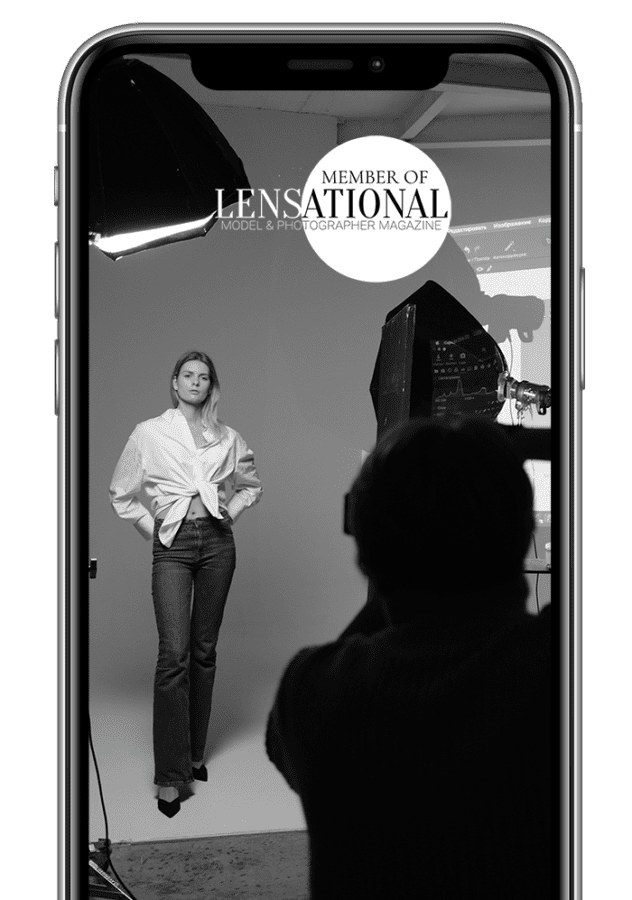Attracting your ideal clients is crucial for the success of your business. In this article, I will guide you through the steps together how to get more photography clients with SEO.
With so many photographers out there, it can be challenging to stand out and get noticed. This is where SEO-optimized content comes in. By optimizing your website and blog content for search engines, you can increase your visibility and attract the right clients to your business.
- 1. Understanding Your Target Audience in Photography
- 2. Importance of SEO in Photography Marketing
- 3. Keyword Research for Photography SEO
- 4. Crafting a Captivating Photography Brand Message
- 5. Creating SEO-Optimized Photography Blog Content
- 6. Creating Photography Portfolio that Attracts Ideal Clients
- 7. Social Media for Photography Marketing
- 8. Email Marketing for Photography Business
- 9. Guest Blogging for Photography SEO
- 10. Map yourself on Google
- 11. Photography SEO Tools and Resources
- Conclusion
1. Understanding Your Target Audience in Photography
It’s important to have a deep understanding of your target audience. Knowing who your ideal client is can help you tailor your photography style, marketing messages, and even your pricing to best appeal to their needs and desires.
Understanding your target audience in photography requires a bit of research and analysis, but the payoff can be huge.
One of the first steps in understanding your target audience is to identify who they are. Are they families with young children? Professionals looking for headshots? Couples celebrating their engagement? Each of these groups has unique needs and preferences when it comes to photography.
By understanding who your target audience is, you can create photography that resonates with them on a deeper level.
Another important factor in understanding your target audience is knowing what they value. For example, if you primarily work with families, you may find that they value candid, natural photos that capture the unique personalities of each family member.
On the other hand, if you work with professionals, they may be more interested in polished, studio-style headshots that convey a sense of professionalism and competence.
By understanding what your target audience values, you can create photography that speaks directly to those values and resonates with them on an emotional level.
In addition to understanding who your target audience is and what they value, it’s also important to consider where they spend their time online and offline. Do they spend a lot of time on social media? Are they likely to attend networking events or conferences? By knowing where your target audience is likely to be, you can focus your marketing efforts on those channels and reach them more effectively.
- Are you a wedding photographer, a portrait photographer, or a commercial photographer?
- What are their age, gender, location, income, and interests?
- What are their desires, and aspirations?
Answering these questions will help you create content that resonates with your target audience.
2. Importance of SEO in Photography Marketing
SEO stands for Search Engine Optimization, which is the process of optimizing your website and content for search engines like Google. By doing so, you can improve your website’s ranking on search engine results pages (SERPs) and increase your visibility to potential clients.
SEO is important for photography marketing because it can help you attract organic traffic to your website, which is more likely to convert into paying clients. Moreover, SEO is a long-term strategy that can help you establish your authority and reputation in your niche.
3. Keyword Research for Photography SEO
Keyword research is the process of identifying the keywords and phrases that your target audience is searching for on search engines.
By incorporating these keywords into your website and content, you can increase your chances of ranking higher on SERPs. There are several tools and resources you can use for keyword research, such as Google Keyword Planner, SEMrush, and Ahrefs.
So, what are the best keywords for photography SEO? Well, it depends on your niche and target audience.
For example, if you specialize in wedding photography, then using keywords such as “wedding photographer,” “bridal photography,” and “engagement photos” can be highly effective.
On the other hand, if you focus on landscape photography, then using keywords such as “nature photography,” “scenic views,” and “landscape prints” can attract the right audience.
Another important aspect of selecting the best keywords for photography SEO is considering the search intent of your target audience. This means thinking about why people might be searching for your type of photography and what they are looking for.
For example, if someone is searching for “wedding photographer,” they may be looking for a professional to capture their special day. In this case, using keywords such as “wedding photography packages,” “professional wedding photographer,” and “affordable wedding photography” can be effective.
When selecting the best keywords for photography SEO, it’s also important to consider the competition. Using highly competitive keywords can be challenging, as you may be competing with many other photographers for the same audience.
Instead, try to focus on long-tail keywords that are more specific and targeted. For example, instead of using the keyword “portrait photographer,” you could use “outdoor portrait photographer,” “family portrait photographer,” or “pet portrait photographer.”
Remember to use these keywords naturally and strategically, without overstuffing your content. With the right keywords and SEO tactics, you can take your photography business to the next level.
4. Crafting a Captivating Photography Brand Message
Your brand message is the essence of your photography business. It conveys who you are, what you stand for, and what makes you unique. Crafting a captivating brand message is crucial for attracting your ideal photography clients because it helps you differentiate yourself from your competition and establish an emotional connection with your audience.
To craft your brand message, start by defining your:
- Mission
- Vision
- Values.
Then, think about your unique selling proposition (USP) and how you can communicate it to your audience. Finally, create a brand story that reflects your personality and resonates with your target audience.
5. Creating SEO-Optimized Photography Blog Content
Blogging is a powerful tool for attracting your ideal photography clients because it allows you to showcase your expertise, share your insights and tips, and engage with your audience. When creating blog content, make sure to incorporate your keywords naturally into your headlines, subheadings, and body text.
Also, use high-quality images and videos to make your content visually appealing and engaging. Finally, promote your blog content on social media and other channels to increase its visibility and reach.
6. Creating Photography Portfolio that Attracts Ideal Clients
Your photography portfolio is your showcase to the world. It is where potential clients can see your work and decide whether to hire you or not. Therefore, creating a photography portfolio that attracts your ideal clients is crucial for the success of your business.
When creating your portfolio, focus on showcasing your best work that is relevant to your niche and target audience. Also, make sure to include a variety of images that demonstrate your style, creativity, and technical skills.
Finally, optimize your portfolio for SEO by using descriptive titles, alt tags, and meta descriptions.
7. Social Media for Photography Marketing
Social media is a powerful tool for photography marketing because it allows you to connect with your audience, promote your work, and build your brand.
When using social media for photography marketing, focus on the platforms that are most relevant to your target audience. For example, if you specialize in wedding photography, Instagram and Pinterest may be more effective than Twitter or LinkedIn.
Also, make sure to post regularly, use hashtags, and engage with your followers. Finally, use social media analytics to track your performance and adjust your strategy accordingly.
8. Email Marketing for Photography Business
Email marketing allows you to reach out to your clients and potential clients directly, without the distractions of social media or other forms of advertising. With email marketing, you can create targeted campaigns that speak directly to the needs and interests of your audience.
Whether you’re promoting a new service or showcasing your latest work, email marketing is a powerful way to get your message in front of the people who matter most.
To get started with email marketing for your photography business, you’ll need to build a list of subscribers. This list should include both current and past clients, as well as anyone who has expressed interest in your work.
You can build your list by adding sign-up forms to your website or social media profiles, or by offering incentives such as discounts or freebies for signing up.
Once you have your list, it’s time to start creating your email campaigns. These campaigns should be personalized and engaging, with a clear call to action that encourages your subscribers to take action.
Whether you’re promoting a new service or offering a special deal, your emails should be designed to capture your audience’s attention and keep them engaged with your brand. To make your email campaigns even more effective, you can use tools like segmentation and automation.
Segmentation allows you to divide your list into smaller groups based on factors like location, interests, or past purchases. This allows you to create more targeted campaigns that are tailored to the specific needs and interests of each group.
Automation, on the other hand, allows you to set up automated sequences that will send out emails at specific times or in response to specific actions. This can be a powerful tool for nurturing leads and keeping your subscribers engaged with your brand over time.
9. Guest Blogging for Photography SEO
Guest blogging is a powerful strategy for photography SEO because it allows you to establish your authority, build backlinks to your website, and attract new audiences. When guest blogging, focus on finding high-quality websites that are relevant to your niche and target audience.
Also, make sure to create valuable content that adds value to the host website’s audience. Finally, include a bio and a link back to your website to drive traffic and improve your SEO.
To write a guest content for Lensarional Magazine, contact us here.
10. Map yourself on Google
Local search engine optimization (SEO) is critical for businesses that target customers in a specific geographic area. It helps increase visibility in search results for people searching for products or services in that area.
One powerful tool for local SEO is Google Maps. By claiming and optimizing your business listing on Google Maps, you can improve your search engine rankings and attract more customers.
To map yourself on Google for SEO, start by claiming your business listing. This involves verifying that you are the owner or authorized representative of the business. Once verified, you can update your listing with accurate information, such as your business hours, website, phone number, and address.
Be sure to choose relevant categories for your business, as this will help Google better understand what your business does and show it to the right people.
Next, optimize your listing for local SEO. This includes adding keywords that your target customers might search for, such as “pizza delivery” or “hair salon near me.” Use these keywords in your business name, description, and other fields.
Also, add photos and videos to your listing to make it more attractive and encourage people to visit your business.
Another important aspect of mapping yourself on Google for SEO is getting customer reviews. Reviews are a key factor in local search rankings, so encourage your customers to leave reviews on your Google listing. Respond promptly to any negative reviews and thank customers for positive feedback.
11. Photography SEO Tools and Resources
There are several photography SEO tools and resources that can help you improve your website’s ranking on search engines. For example, you can use:
Keyword research tool
One of the most important photography SEO tools. This tool is used to identify the specific words and phrases that potential clients are using to search for photography services online.
By using these keywords throughout your website’s content, you can increase your chances of ranking higher on search engine results pages. Some popular keyword research tools include Google Keyword Planner, SEMrush, and Ahrefs.
Google Analytics
Another essential tool for photography SEO. This tool provides valuable insights into your website’s traffic, including where it’s coming from, how long visitors are staying on your site, and which pages are the most popular. By analyzing this data, you can identify areas of your website that need improvement and make changes accordingly.
Google Analytics also provides valuable information about your website’s bounce rate, which is the percentage of visitors who leave your site after viewing only one page. By reducing your bounce rate, you can increase your website’s engagement and improve your search engine rankings.
Yoast’s SEO
Yoast offers a free SEO plugin for WordPress, which can help photographers optimize their website’s content and improve their search engine rankings.
Moz’s Beginner’s Guide to SEO
Moz’s Beginner’s Guide to SEO provides a comprehensive overview of the fundamentals of search engine optimization. This guide covers everything from keyword research and on-page optimization to link building and social media marketing.
Conclusion
Attracting your ideal photography clients with SEO-optimized content is a long-term strategy that requires patience, persistence, and creativity. By understanding your target audience, optimizing your website and content for search engines, using social media, email marketing, and guest blogging, you can increase your visibility and attract the right clients to your business.
Remember, your photography business is unique, and your SEO strategy should reflect your personality, style, and values. So, snap your way to success, and let your SEO-optimized content do the rest.






